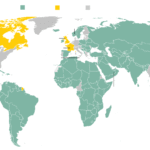National Transportation Safety Board investigators grilled Federal Aviation Administration and Army officials for not taking action after years of warnings from air traffic controllers and others about dangers in the busy airspace around Reagan National Airport, which is crowded with military and civilian aircraft.
They released thousands of pages of documents about equipment faults aboard Army helicopters, confusion and limited visibility for the helicopter crew on the night of the crash, control tower staffing, and missed opportunities to reduce clear risks.
The documents — released at the start of three days of public hearings on the crash — include the first account from the frontline air traffic controller in National’s tower. He was handling two jobs at once and told investigators that he had been getting “overwhelmed” just 15 minutes before the crash.
An airline pilot picked up on that, telling investigators the controller seemed unusually busy and overloaded. The controller said he relied on the helicopter crew to avoid the airliner, but they appeared not to have seen the jet even seconds before impact.
But roots of the problems began long before that night, according to NTSB documents. The Army’s helicopters had altimeters that gave erroneous readouts to pilots flying in the sensitive airspace, which has a 200-foot height limit. And before the crash, a FAA regional manager blocked a proposal to move the helicopter route away from the danger zone of intersecting flight routes where the crash happened, deeming the idea “too political.”



